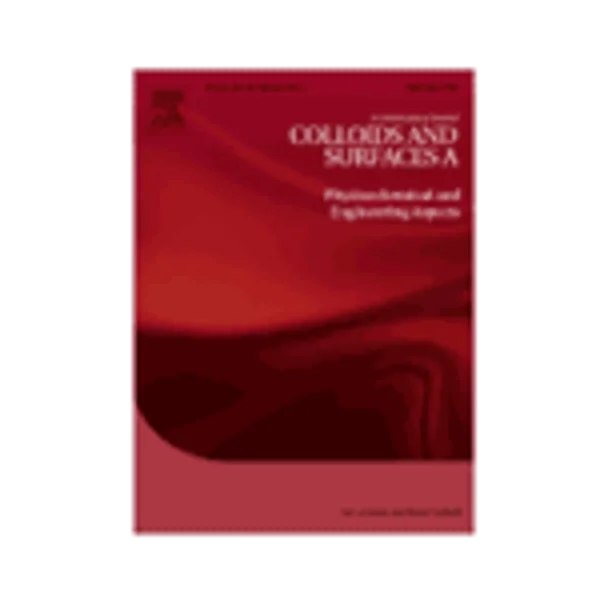-
mechanism study of condensed drops jumping on super-hydrophobic surfaces
جزئیات بیشتر مقاله- تاریخ ارائه: 1392/07/24
- تاریخ انتشار در تی پی بین: 1392/07/24
- تعداد بازدید: 1154
- تعداد پرسش و پاسخ ها: 0
- شماره تماس دبیرخانه رویداد: -
the out-of-plane jumping motion of coalesced condensed drops on super-hydrophobic surfaces can potentially enhance dropwise condensation greatly. but the jumping mechanism is not clear. in this paper, the initial shape of a coalesced droplet is determined based on the conservation of drop interface free energy (ife) and viscous dissipation energy before and after two or more condensed droplets merge. the coalesced drop is in unstable state with a driving force to reduce its base radius toward equilibrium state. then, the driving force and resistance on three-phase contact line (tpcl) are analyzed during the drop transformation. and the dynamic equation describing the shape conversion of the droplet is proposed and solved. the jumping height of a merged drop is determined according to the up moving speed of drop gravity center when the base radius of the droplet reduces to 0. the calculation results show that a coalesced droplet on flat surface can transform its shape limitedly. it cannot jump since its transformation stops before it comes to its equilibrium state. a wetted drop on rough surfaces is even more difficult to transform and jump because of the greater tpcl resistance. however, on a two-tier surface, a partially wetted drop impaling only the micro-scale roughness exhibits a shape transition to cassie state and possible jumping upon coalescence if the micro and nanostructure parameters are suitable. furthermore, after the coalescence of two or more cassie state drops with their scale range from tens micrometer to millimeter on a textured surface, the merged composite drop can easily transform until its base radius becomes 0 and then jumps. a too small or too large merged drop will not jump because the obvious viscous dissipation energy or drop gravity respectively dominates the behavior of the drop. meanwhile the coalescence-induced jumping of two drops will also not take place if their scales are significantly different. it can be concluded that the key factors resulting in condensed drops jumping are the merged drop in unstable state with enough surplus ife and small tpcl resistance on nano or micro–nano two-tier surfaces.
مقالات جدیدترین رویدادها
-
استفاده از تحلیل اهمیت-عملکرد در ارائه الگوی مدیریت خلاقیت سازمانی و ارائه راهکار جهت بهبود
-
بررسی تاثیر ارزش وجوه نقد مازاد بر ساختار سرمایه شرکت های پذیرفته شده در بورس اوراق بهادار تهران
-
بررسی تأثیر سطح افشای ریسک بر قرارداد بدهی شرکت های پذیرفته شده در بورس اوراق بهادار تهران
-
بررسی تأثیر رتبه بندی اعتباری مبتنی بر مدل امتیاز بازار نوظهور بر نقد شوندگی سهام با تأکید بر خصوصی سازی شرکت ها
-
تأثیر آمیخته بازاریابی پوشاک ایرانی بر تصویر ذهنی مشتری پوشاک ایرانی (هاکوپیان)
-
تحلیلی بر وضعیت پایداری کالبدی محلات شهری مطالعه موردی (محلات اسکان غیررسمی منطقه 4 شهر اردبیل)
-
بررسی وضعیت کنونی آبخوان دشت اوان
-
کاربرد نتایج آزمایش spt در برآورد زاویه اصطکاک داخلی خاک های دانه ای با استفاده از شبکه عصبی مصنوعی
-
numerical study of the kp equation for non-periodic waves
-
annihilator conditions in noncommutative ring extensions
مقالات جدیدترین ژورنال ها
-
مدیریت و بررسی افسردگی دانش آموزان دختر مقطع متوسطه دوم در دروان کرونا در شهرستان دزفول
-
مدیریت و بررسی خرد سیاسی در اندیشه ی فردوسی در ادب ایران
-
واکاوی و مدیریت توصیفی قلمدان(جاکلیدی)ضریح در موزه آستان قدس رضوی
-
بررسی تاثیر خلاقیت، دانش و انگیزه کارکنان بر پیشنهادات نوآورانه کارکنان ( مورد مطالعه: هتل های 3 و 4 ستاره استان کرمان)
-
بررسی تاثیر کیفیت سیستم های اطلاعاتی بر تصمیم گیری موفق در شرکتهای تولیدی استان اصفهان (مورد مطالعه: مدیران شرکتهای تولیدی استان اصفهان)
-
بررسی تاثیر کیفیت خدمات الکترونیکی بر رضایت و اعتماد مشتریان در خریدهای آنلاین (مورد مطالعه: فروشگاه اینترنتی دیجی کالا)
-
بازسازی در بازاریابی کسب و کارای امروز در ایران
-
بررسی نقش تعدیلی فرهنگ سازمانی بر رابطه بین سیستم اطلاعات حسابداری و عملکرد عملیاتی شرکت های کوچک و متوسط (مطالعه موردی: شرکت های منطقه ویژه عسلویه)
-
بررسی عوامل موثر در افت تحصیلی دانش آموزان و نقش انگیزش در پیشرفت تحصیلی
-
providing a conceptual model of inter-organizational cooperation




سوال خود را در مورد این مقاله مطرح نمایید :